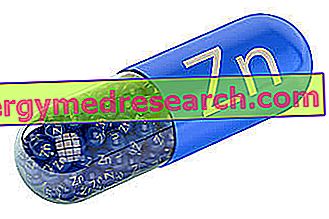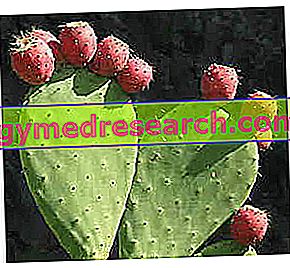Generality
Lutein is a substance of natural origin, known for its antioxidant and protective properties on sight.
From the chemical point of view, lutein belongs to the group of xanthophylls, natural liposoluble pigments contained in many foods, of both animal origin (egg yolk is rich), and above all vegetable (spinach, corn, Brussels sprouts).

Once taken through the diet, this substance is concentrated in the macula, ie in the central area of the retina of the eye, where it absorbs natural blue light, protecting it from harmful UV rays.
It is therefore no coincidence that in some studies lutein has been shown to be effective in preventing age-related macular degeneration, which recognizes one of its main risk factors (along with cigarette smoking, factors) in excessive exposure to the glare of the sun. genetic and nutritional imbalances). This disease is characterized by a degenerative process affecting the retina. In subjects older than 55-65 years living in industrialized countries, age-related macular degeneration is the main cause of progressive and irreversible loss of visual function.
In smaller quantities, lutein is also present in the crystalline lens and in this regard it is attributed the ability to counteract cataracts (a disease caused precisely by the clouding of the lens of the eye).
The xanthophylls, including lutein, which can also be indicated on the label by code E161b, are widely used in the food industry (as natural dyes) and in the zootechnical industry, where they are added to feeds intended for feeding the hens to accentuate coloring. of egg yolk.
For man, the daily requirement of lutein is estimated at 4-6 mg (to satisfy it, 50g of spinach per day is enough).
Lutein in food
| Food | mg / 100 grams |
| spinach | 12.2 |
| Cutting chicory | 10.3 |
| Red radish | 8.83 |
| Parsley | 5.56 |
| Rocket salad | 3.55 |
| peas | 2.48 |
| Lettuce | 2.31 |
| broccoli | 1.40 |
| Corn, yellow | 1.35 |
| Yolk | 1.1 |
| From the database of the American Ministry of Agriculture | |
Indications
Why is lutein used? What is it for?
Classically, due to its biological role, the use of lutein is justified above all in the ophthalmological field, as a protective agent against oxidative eye diseases, such as cataracts and age-related macular degeneration.
In recent years, however, the antioxidant properties of lutein have extended its use also in the antiaging field, where it would seem to slow down the oxidative processes, responsible for the structural and functional aging of numerous organs and tissues.
Property and Benefits
What benefit has Lutein shown during the studies?
The efficacy of lutein in the ophthalmologic field has been widely described in numerous experimental and clinical studies.
The antiaging activity would seem less marked, despite some recent particularly interesting evidences.
According to several clinical trials, conducted on over 500 patients, the use of about 30 mg of lutein for 140 days, would seem to improve the clinical course of ophthalmological diseases such as age-related macular degeneration.
In these patients, the progression of the disease would be decidedly delayed, and the clinical complications less serious.
In an epidemiological study, adequate consumption of lutein-containing foods would appear to be associated with a marked reduction in the risk of developing cataracts even in predisposed patients.
Doses and method of use
How to use lutein
Since effective dosages and dosage regimens are not yet fully standardized, in supplements lutein is present in very variable doses, ranging from 250 mcg to 50 mg.
Given the lipophilic nature of this molecule, it is recommended to take lutein concomitantly with meals, to encourage intestinal absorption.
In the formulation of supplements, lutein is often found associated with other antioxidants, to enhance their effect. Regarding the prevention and therapy of age-related macular degeneration, in addition to lutein, the nutritional importance of other antioxidants (vitamin E, vitamin C, lycopene, selenium, coenzyme Q10), of some minerals (copper and zinc in primis) and foods particularly rich in these substances (green tea, tomatoes, peas, broccoli, cabbage, courgettes, green salad, corn, etc.).
Side effects
The use of lutein, according to the appropriate indications, has generally proved to be safe and well tolerated.
The side effects described were very rare and clinically insignificant.
Contraindications
When should lutein not be used?
The use of lutein is contraindicated in case of hypersensitivity to the active ingredient.
Pharmacological Interactions
Which drugs or foods can modify the effect of lutein?
The intestinal absorption of lutein could be compromised by the simultaneous intake of active ingredients and foods such as cholestyramine, colestipol, mineral oils, orlistat, beta-carotene and pectin.
On the contrary, the simultaneous use of medium chain triglycerides or some vegetable oils, such as corn, would seem to increase the intestinal absorption of lutein.
Precautions for use
What do you need to know before taking lutein?
During pregnancy and in the subsequent period of breastfeeding, even in case of greater need, the only source of safe and adequate lutein would be that deriving from the daily consumption of fruit and vegetables.
In these particular phases of life, given the ability of lutein to accumulate in the fatty organs, the use of specific supplements is generally contraindicated.



